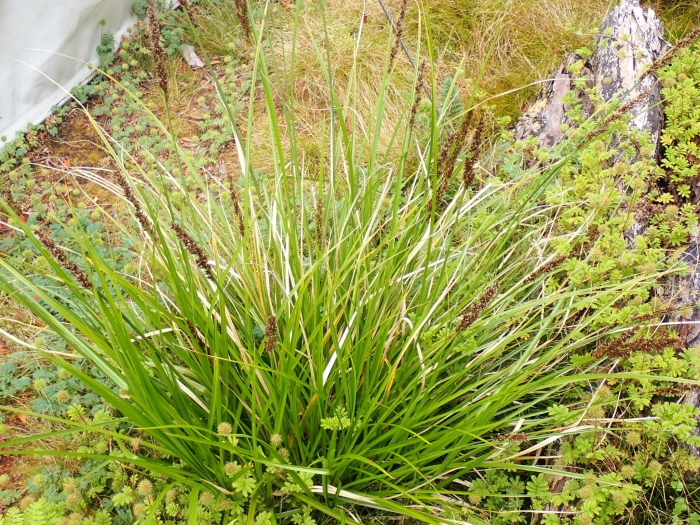Tall Sedge
(Carex appressa)
Tall Sedge (Carex appressa)
/
/

Heidi Meudt
CC BY 4.0
Image By:
Heidi Meudt
Recorded By:
Copyright:
CC BY 4.0
Copyright Notice:
Photo by: Heidi Meudt | License Type: CC BY 4.0 | License URL: http://creativecommons.org/licenses/by/4.0/ | Rights Holder: Heidi Meudt | Publisher: iNaturalist | Date Created: 2023-01-12T08:24:54-08:00 |





















Estimated Native Range
Summary
Carex appressa, commonly known as Tall Sedge, is a densely tufted perennial herb that is native to wetlands and riparian zones in Australia, New Zealand, and the South West Pacific. It forms clumps up to 20 inches in diameter, with erect, triangular stems that can reach around 39 inches in height. The leaves are long, narrow, and have rough margins. Tall Sedge is characterized by its brownish, spike-like inflorescence composed of 20 or more spikes, which are most prominent during its flowering season in spring and summer. The flowers are not particularly showy but are of ecological importance.
Tall Sedge is valued for its ability to stabilize soil and its use in water-sensitive urban design, including rain gardens and wetland restoration. It thrives in full sun to part shade and prefers moist to wet soils with good drainage. In cultivation, it is often used for erosion control, as a water feature plant, or in mass plantings for a naturalistic look. It is relatively low-maintenance but may require division every few years to manage its spread. While it is not known for serious disease or pest problems, it can become invasive if conditions allow for unchecked growth.CC BY-SA 4.0
Tall Sedge is valued for its ability to stabilize soil and its use in water-sensitive urban design, including rain gardens and wetland restoration. It thrives in full sun to part shade and prefers moist to wet soils with good drainage. In cultivation, it is often used for erosion control, as a water feature plant, or in mass plantings for a naturalistic look. It is relatively low-maintenance but may require division every few years to manage its spread. While it is not known for serious disease or pest problems, it can become invasive if conditions allow for unchecked growth.CC BY-SA 4.0
Plant Description
- Plant Type: Grass
- Height: 2-3.3 feet
- Width: 1.5-2 feet
- Growth Rate: Rapid
- Flower Color: N/A
- Flowering Season: Spring, Summer
- Leaf Retention: Evergreen
Growth Requirements
- Sun: Full Sun
- Water: Medium, High
- Drainage: Medium, Slow
Common Uses
Bird Garden, Erosion Control, Groundcover, Low Maintenance, Street Planting, Water Garden
Natural Habitat
Native to wetlands and riparian zones in Australia, New Zealand, and the South West Pacific
Other Names
Common Names: Tall Sedge, Appressed Sedge
Scientific Names: , Carex appressa, Carex appressa f. diaphana, Carex appressa f. minor, Carex appressa var. appressa, Carex appressa var. diaphana, Carex appressa var. diaphana, Carex appressa var. typica, Carex appressa var. virgata, Carex chlorantha var. composita
GBIF Accepted Name: